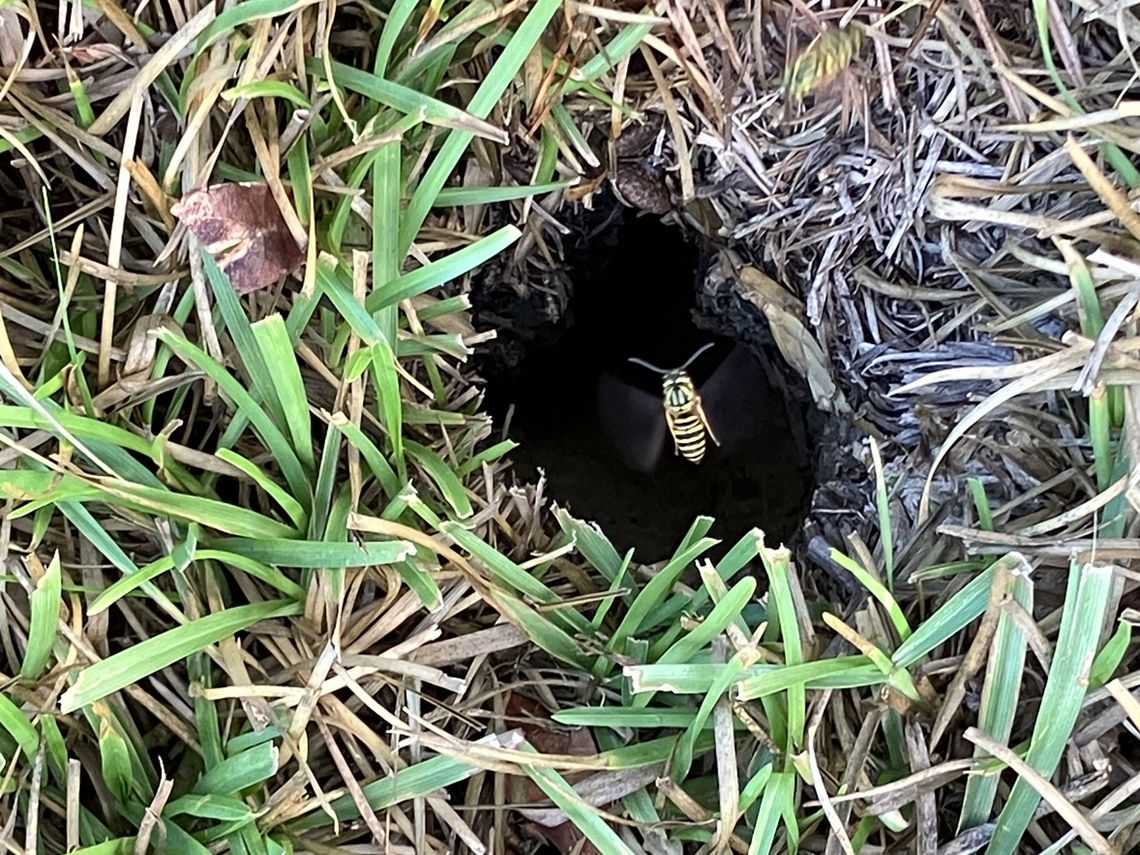Living in the deep south has many advantages that I've come to appreciate like cold ripe watermelons this time of the year and an abundant source of outdoor activity like boating, camping, fishing and soon to come hunting.
But, like anywhere on the planet you have been placed to live, there are its disadvantages.
This 100 plus degree humid weather we are presently having and always the threat of tropical storms coming up from the Gulf of Mexico this time of the year not to mention those strong damaging tornadoes that can form suddenly without warning can make life miserable here in the Magnolia State.
Another one has just lately been found about half a dozen steps from our carport and main entrance to our home.
It's a buzz with a nasty bite, a large nested colony of yellow jackets that have taken up residence in our front yard coming and going from a large gaping hole in the ground.
I'm about to displace them with a dose of gasoline and then covering their hole with a large stone, about the only way I have ever found to rid those nasty hurting little rascals when they show up.
Sorry, it's either them or my family and me and they have drawn the short stick.
I can never forget the day one locked down on my eyelid with its stinger and when I reached up to rid myself of its hurt, I had to literally pull it from my eyelid, leaving its stinger embedded behind.
And something about the loud sound of machinery, like the John Deere tractor my friend was on one summer day bush hogging draws them to it and you the operator.
The results are never good, as was my friend that day.
They wrapped him up.
Here are some interesting facts about this buzz with a bite worth repeating.
Yellow jacket is the common name in North America for these predatory social wasps, not bees that some people mistakenly call them.
The closet wasp to them is the hornet that is much bigger.
For their size, the yellow jacket packs a powerful wallop, and the biggest threat is to humans who are allergic to their venom.
Some people have actually died from the sting because it is usually a swarm that shows up stinging.
In the southeastern United States, where southern yellowjacket (Vespula squamosa is their official name) nests may persist through the winter, with colony sizes reaching as much as 100,000 adult wasps.
As you can see, they like company.
They can be identified by their distinctive markings and a characteristic, rapid, side-to-side flight pattern prior to landing.
All females are capable of stinging and believe or not, yellowjackets are important predators of agriculture pest insects.
Many of the insects collected by the yellowjacket workers to feed the young are considered pest species, thus making the yellowjacket beneficial to farming.
That's about the only thing they have going for them.
I guess, like this humid heat and the continual threat of inclement weather resulting from it, the yellow jacket will always be around here in our beloved deep south.
Like myself just be aware when out enjoying the great outdoors if you hear the distinct buzz
It is the buzz with a nasty bite.
God bless you and God bless America.
.png)

Comment
Comments